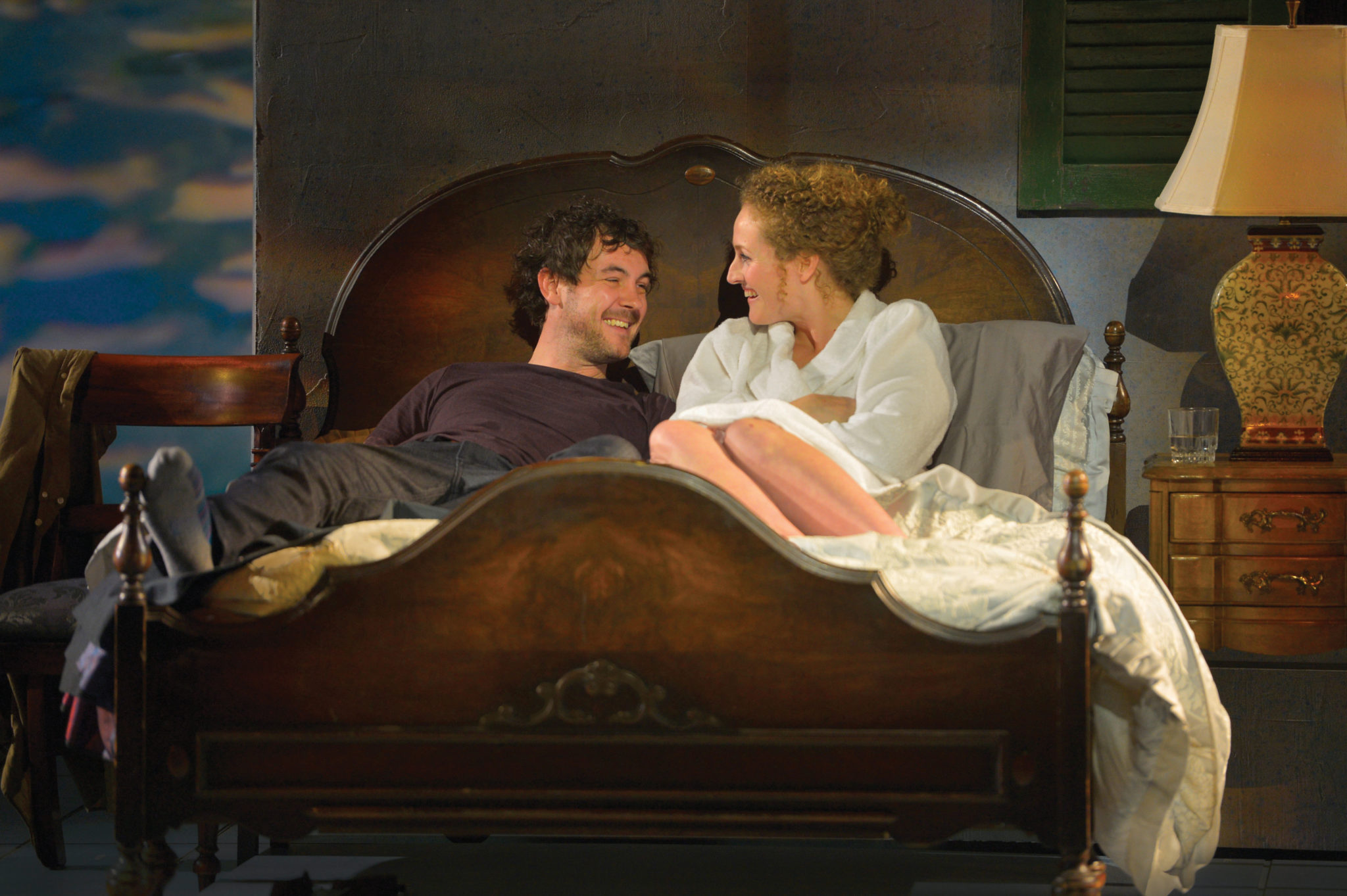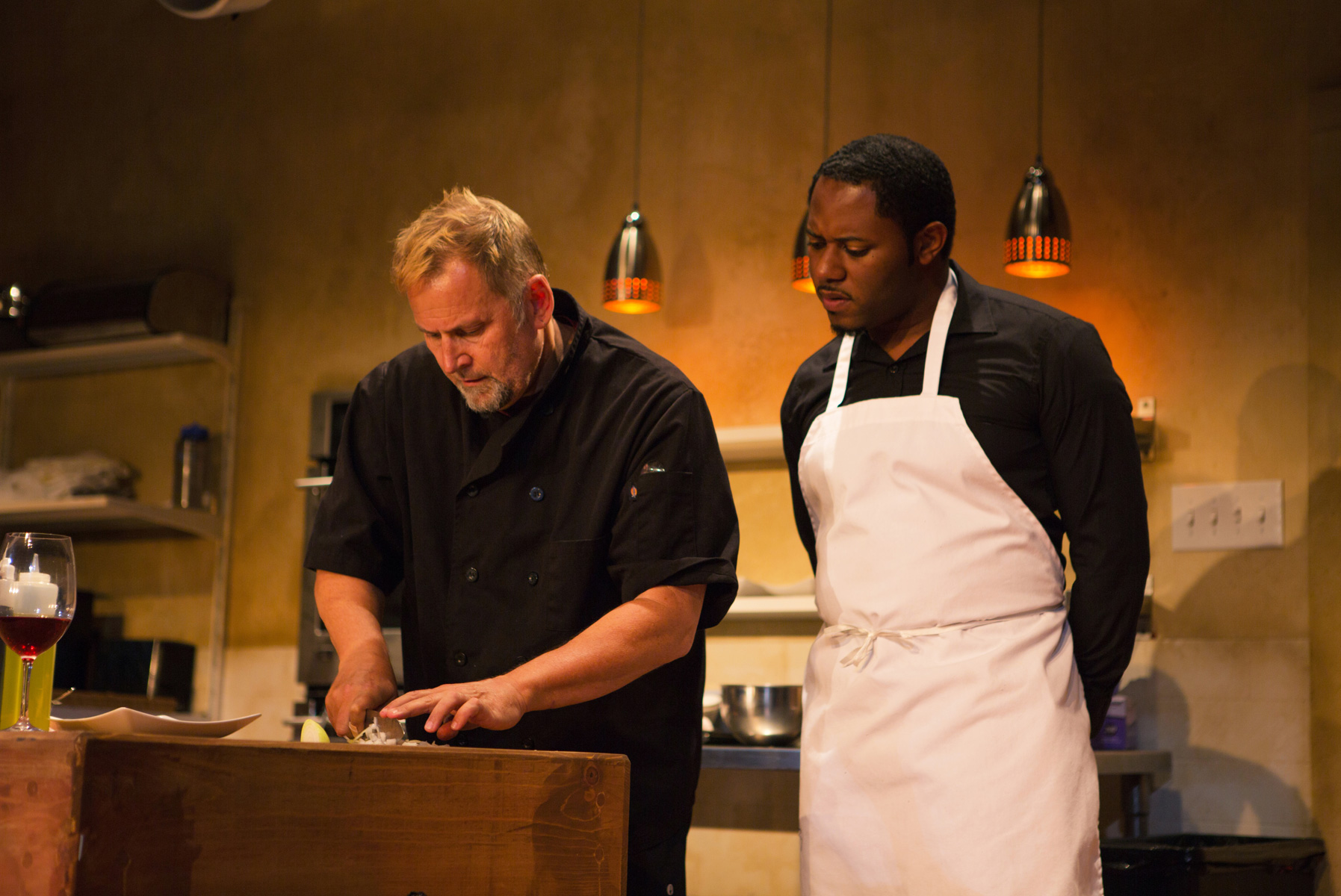By Charles Brousse
There are so many ideas bouncing around the capacious set of A.C.T.’s Bay Area premiere of Tom Stoppard’s The Hard Problem that I find it nearly impossible to describe them, let alone evaluate how they fit (or don’t fit) together as a cohesive piece of theater.
To use a homely metaphor, the two-hour, intermission-less experience reminded me of the pinball machines I loved as a kid at the penny arcades. You took a deep breath, pulled a lever and let it go. The “it” was a shiny steel ball. The lever was attached to a spring that would propel the ball to the top of an illuminated obstacle course. Pulled by gravity, the ball would then roll back toward the player, bumping into brightly lit obstacles and player-manipulated gates that would keep it from falling into the receiving tray that marked the end of its useful life. Every time that mournful event was delayed, there were flashes of light and a soul-satisfying buzz or ring as your point total on the machine’s counting display mounted.
There are no flashes of light, buzzes or rings in Stoppard’s latest play, but it does feel like a game. We, the spectators, watch as the playwright’s intellectual ball (embodied in his dual protagonists) caroms hither and thither with extraordinary energy. At first, it’s gripping as we try to figure out who the winner will be, or even what the game is about. Then, about midway, it suddenly dawns on us that there will be no winners or losers and the game itself is without explication or end. We might as well be watching paint dry.
That’s Stoppard for you. During his long residency on the international stage, the British writer has often been criticized for being more interested in toying with ideas than in telling compelling stories filled with memorable characters.
The Hard Problem is a perfect illustration. Its narrative spine is simple enough. Hilary (Brenda Meaney) and Amal (Vandit Bhatt) are competing for a job as a research assistant at the prestigious Krohl Institute for Brain Science (location not specified, but presumably London). They have very different strengths, both of which the institute could use. She’s a smart young woman whose graduate degree in psychology (a “soft science”), people skills and religious beliefs would bring needed diversity to a staff filled with materialist-oriented practitioners of the “hard” sciences—biology, physics and chemistry. Amal is also young, a brilliant mathematician and biophysicist who could help guide the institute’s hedge fund-based investment program.
After their interviews with Dr. Leo Reinhart, a high-ranking staff member (Anthony Fusco), Hilary is hired, but Amal becomes a financial advisor to Jerry Krohl, the Institute’s founder (Mike Ryan). By the end of the play, however, she is on her way out because of irresolvable problems involving her spiritual and moral beliefs, and he finds himself banished to capitalist purgatory because of an offhand remark that made Krohl’s investors nervous.
That’s the general outline. There’s also a secondary narrative that involves Hilary’s early life, her abandoned daughter Cathy (Carmen Steele) and her relationship with an off-and-on atheist lover, Spike (Dan Clegg). But most of the playing time is given over to lengthy running debates about materialism vs. spiritualism, emotions vs. self-serving instinct, science vs. religion, the origin of morality in bio-evolutionary theory and what Stoppard, borrowing from Australian philosopher David Chalmers, calls “the mystery of consciousness.” It’s all very dense, high-sounding philosophical babble, but babble it is—the kind a group of highly educated Oxford or Cambridge students might engage in (after a few beers) “just for the fun of it.”
Ah, well, maybe I’m missing something. A.C.T.’s cast is solid, as is Cary Perloff’s direction, but I keep thinking about scenic designer Andrew Boyce’s set—a sleek white space outlined at ceiling level with rope lines of bright LED lights. Upstage left are a pair of large branchless tree trunks that disappear above the proscenium. Why are they there? And why does one lean perceptibly to the right? That, to me, is one truly “hard problem.”
NOW PLAYING The Hard Problem runs through November 13 at A.C.T.’s Geary Theater, 415 Geary St., San Francisco; 415/749-2228; act-sf.org.











